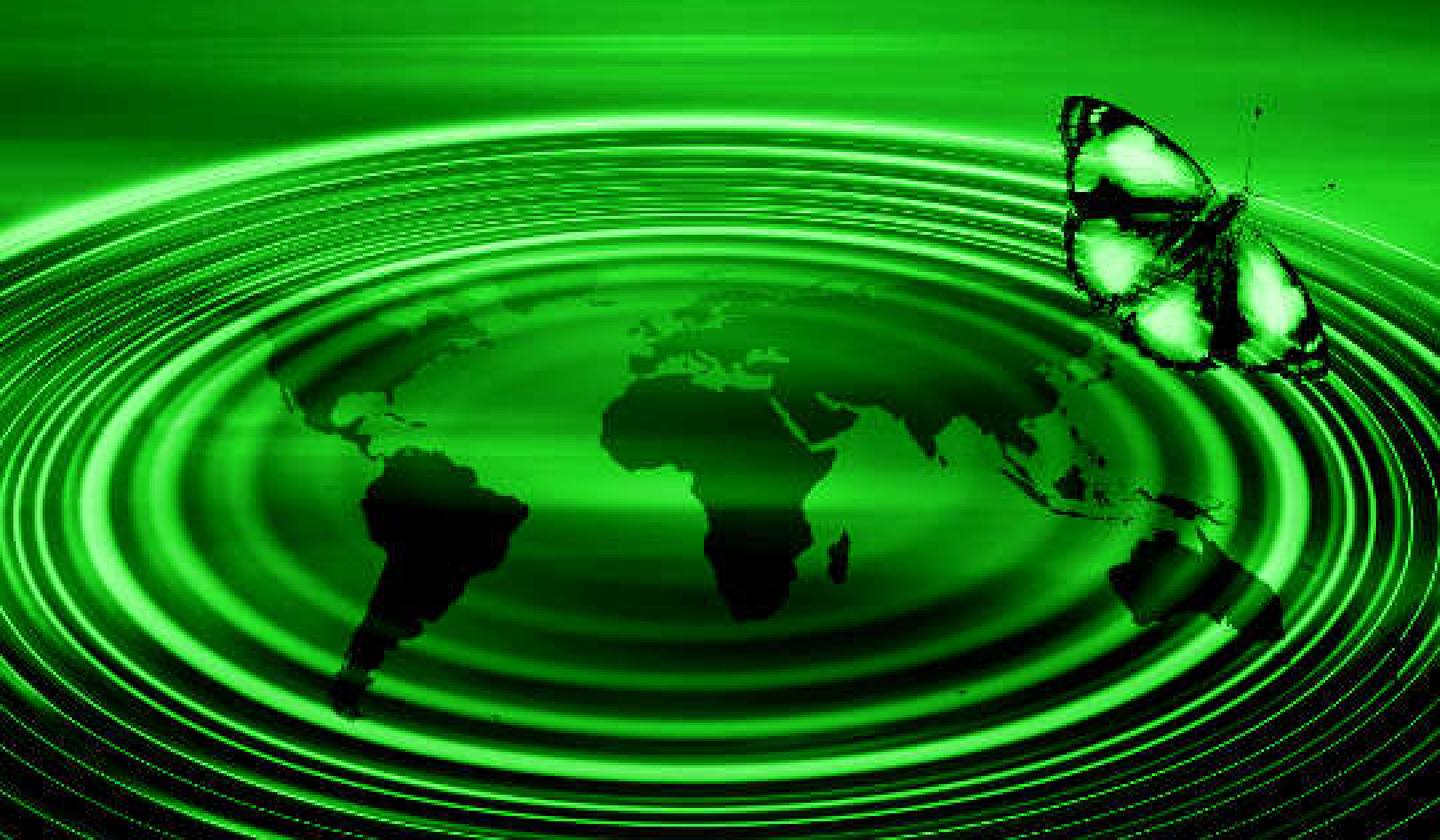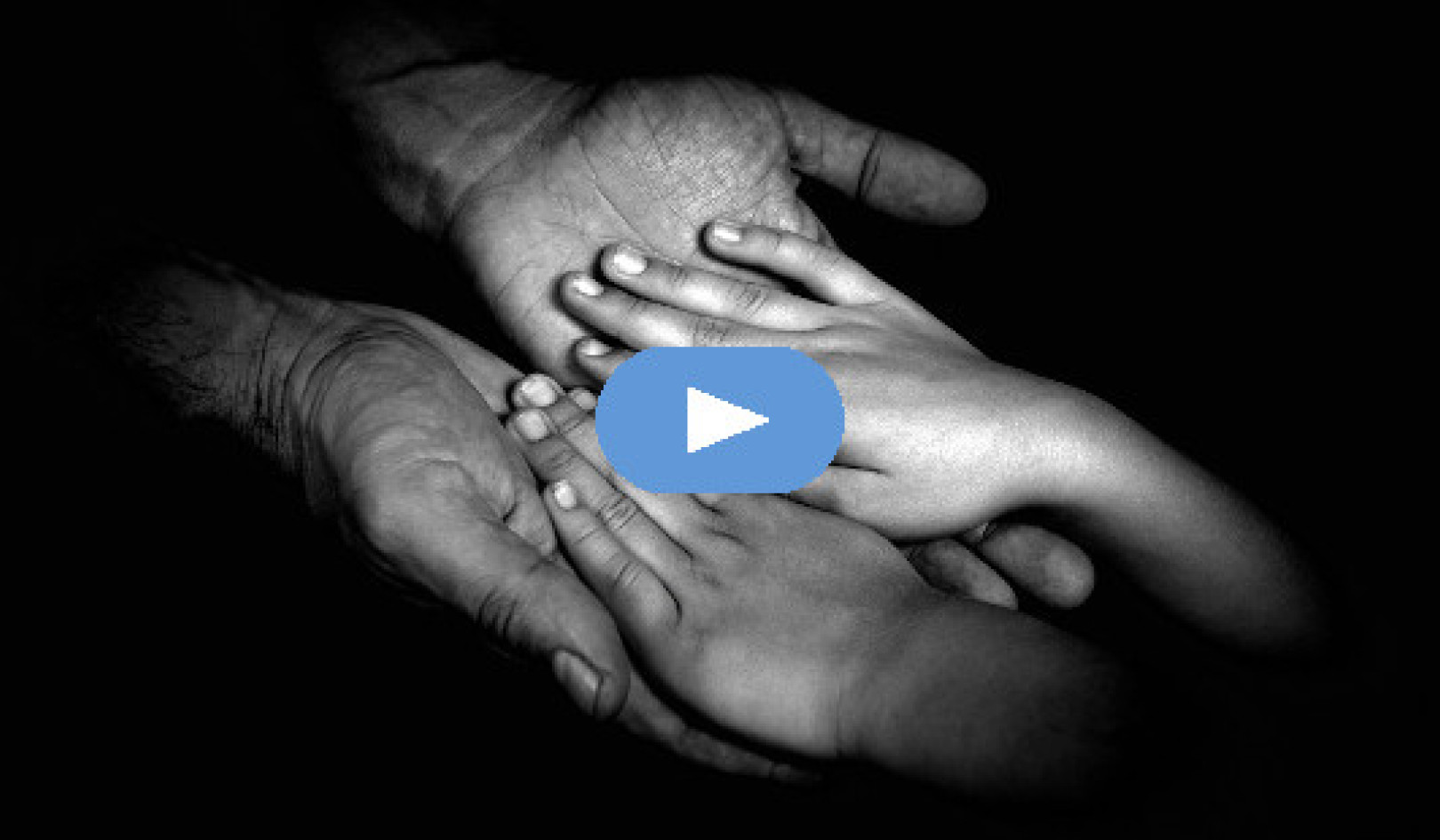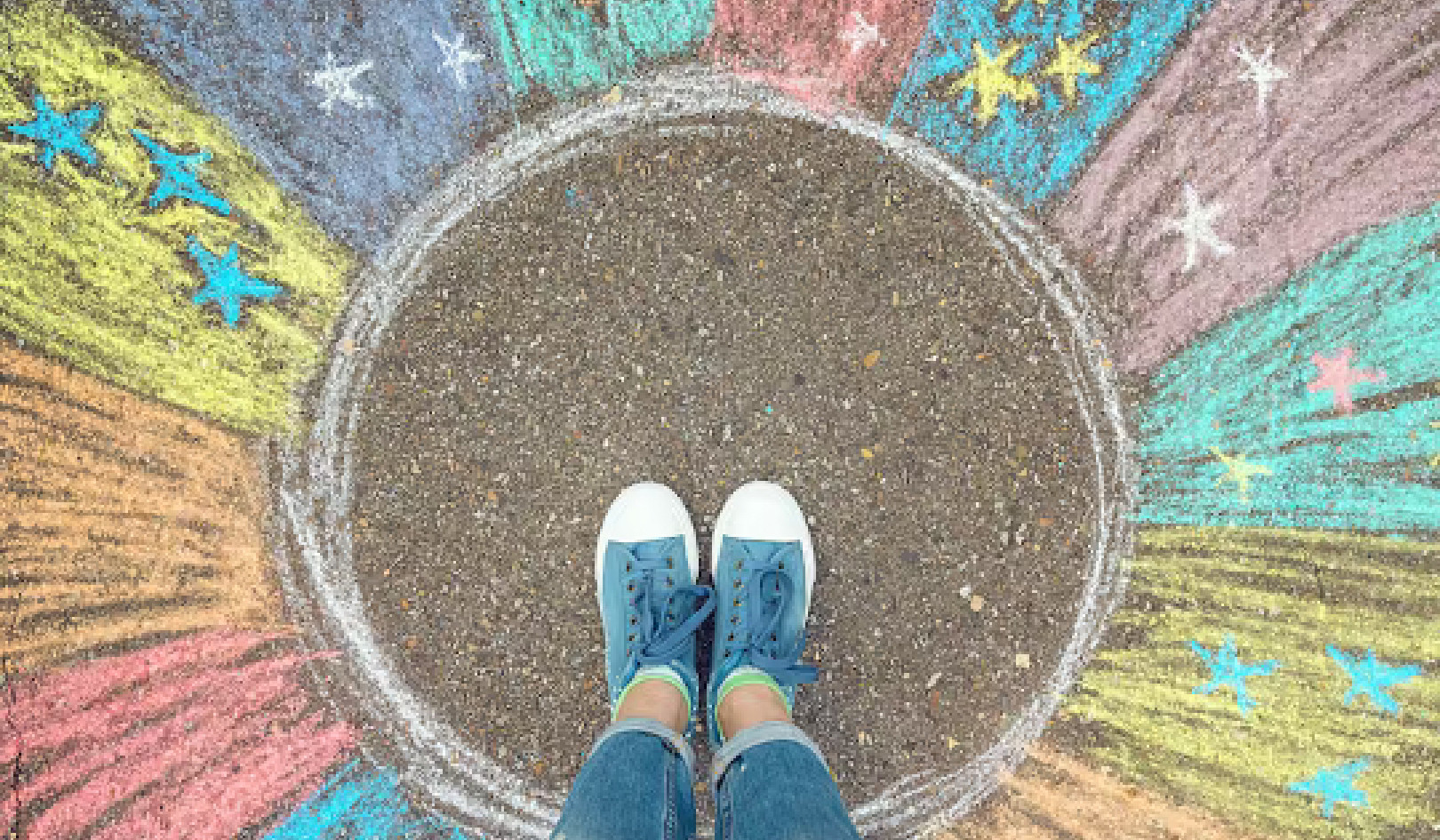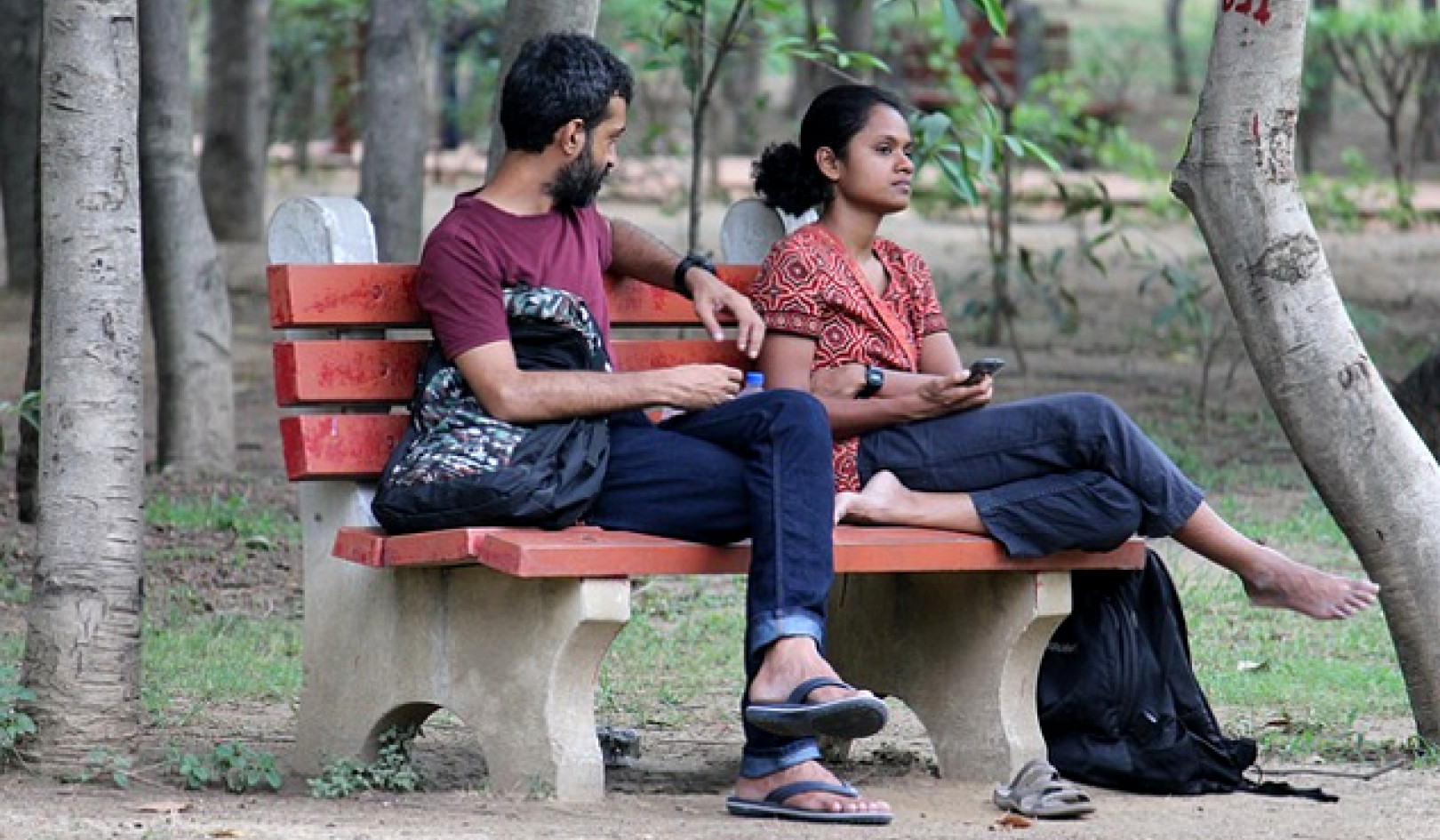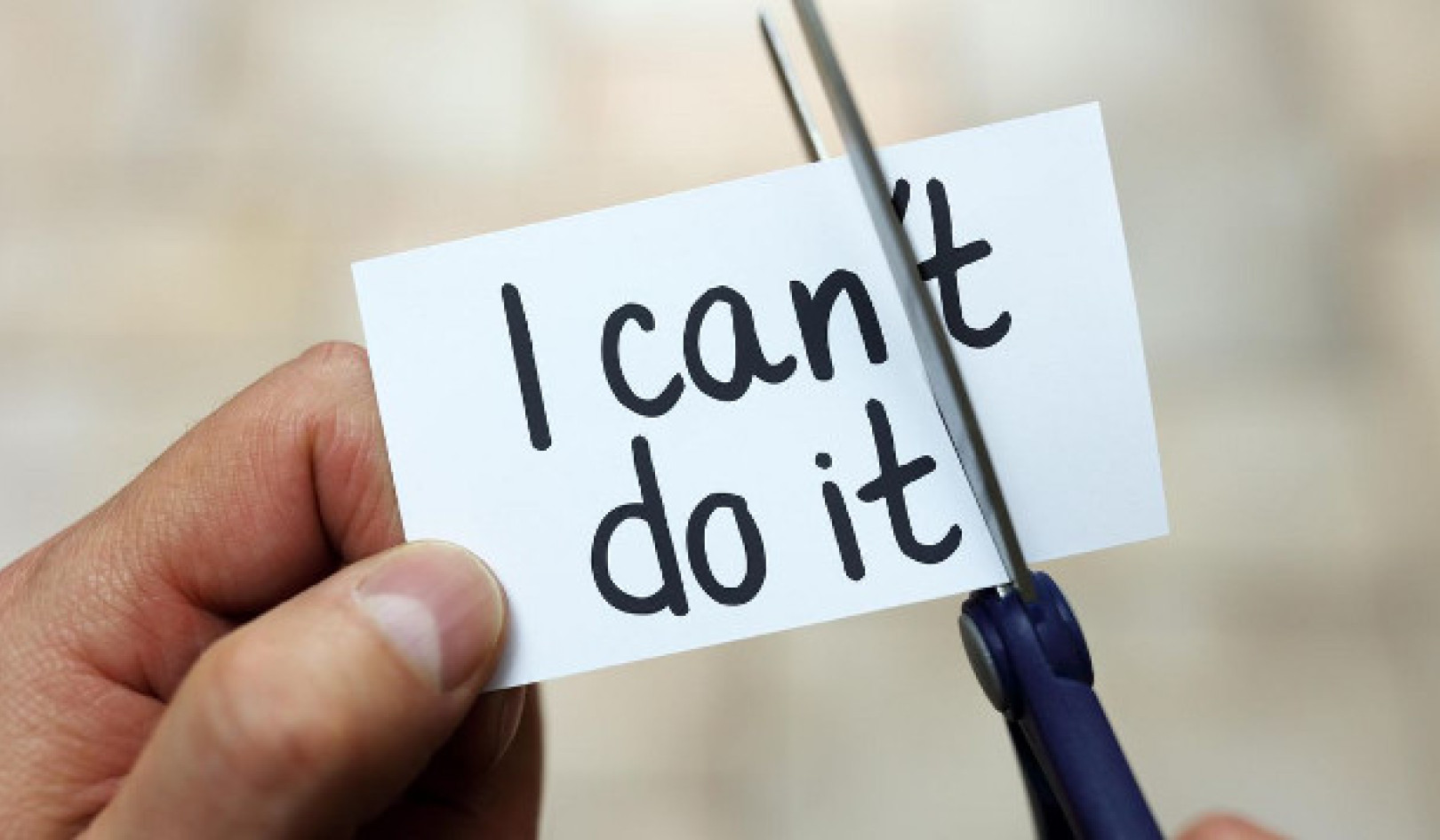Many years ago we met a man who impressed us greatly. His name was J. C. Eaglesmith. He was Native American, a holder of the Sacred Pipe, a veteran of the ordeal known as the Sun Dance. A former marine who served in combat in Vietnam, he weighed maybe 250 pounds and most of it looked like muscle. In short, when it came to masculinity, he made the average tough guy look like your grandmother's knitting.
He stood before us at a conference, talking about "male" and "female" and what those words really mean. His eyes steady, his face impassive, he addressed us in his deep baritone. "I am half woman." A moment's pause, a hint of a smile, then: "My mother was one."
We all laughed. So did J. C. But what he said was true. Physically he is a man. But that just diagrams his plumbing. Once we recognize that a human being is far more than a mass of cells and bones, we enter the realm of mystery. And in that realm no one is as simple as a beard or a breast.
Humanity is realizing this, and it's knocking the stilts out from under a picture of the world that's held us in thrall for ten thousand years. "I am half woman." "I am half man." Those words represent a revolution just as profound as the discovery that the Earth is a sphere floating in the void.
Male and female. What do the terms really signify? Apart from anatomy, perhaps no one really knows. Women cry more than men, but why? Are women inherently more emotional or have they been trained that way? Men are more aggressive. Again, why? Testosterone -- or training? No one knows. Nature and nurture are inseparable. What we intrinsically are blends seamlessly with what we have been taught to imagine we are.
Quagmires of social mythology surround us from birth. Winnowing the essential Self out of those quagmires is perhaps the core purpose of astrology. As we learn to decipher the birthchart, we recognize an individual's elemental nature and help free it from the deadening sinkholes of blind conformity.
Traditional astrology books, written in times when people were dogmatically certain about gender roles, often contain differing interpretations of the same configurations depending on the person's sex. "In the chart of a man, Mars in Aquarius means . . . " The problem is that there is no way, while looking at a birthchart, to discern whether that chart belongs to a woman or a man. They look the same. In their time, those Victorian astrologers may have been doing accurate work. But they may also have been mistaking whimsies of Victorian society for immutable laws of the universe.
The Moon, with its emotional sensitivity, has traditionally been viewed as feminine. The Sun, with its charisma and force, has been seen as masculine. But even proper, blue-haired dowagers in the garden club respond to the Sun, while their huffing, puffing husbands down at the Moose Lodge know the touch of the Moon. No human being is immune to the energies of any of the planets. If you're alive, you've got all ten of them in your chart.
Does astrology, arguably the truest mirror in humanity's possession, suggest that there are no psychic or spiritual differences between men and women? The truth is, astrology's rather mum on the subject. But it certainly implies that, whatever those differences might be, we've spent a lot of years and a lot of lives overestimating, exaggerating, and misdefining them. Every man has a Moon. Every woman has a Sun. One of the darkest skeletons in astrology's closet is the fact that astrologers were not the first to point out that awkward fact.
Perhaps there was a payoff, and not just for the astrologers. Perhaps this devil's bargain of parsing human consciousness into feminine and masculine functions served a purpose. A radical feminist might argue that this schism was men's way of disempowering women, keeping them dependent and weak. A radical masculinist, if there were any, might counter that women created the schism in order to shift an unfair, insufferable burden of practical responsibility to men, thereby condemning them to eternally shorter lifespans and elevated rates of suicide, alcoholism, and stress-related diseases. Meanwhile, the couch potatoes watching the debate on television might shrug and say, "That's just how God made us," then change the channel. Maybe they're right.
Still, we have that cryptic clue in the sky: the Sun and the Moon shine down on all of us, whether we start the morning with shaving cream or a choice of skirts. And if there's anything to astrology, then the Sun and the Moon resonate somehow in every one of us, unless we collude in the ancient deception.
How did this whole mess start? Let's go way, way back, long before cities, before agriculture, before the peaceful years of the Neolithic; back into the first ninety-nine percent of our species' history.
Men kill. Women cook. Men make war. Women make babies. It's an old, annoying line of reasoning, but let's look at it in a different way. Imagine killing! Forget codes of honor, waving flags, the stirring lies old men tell young men -- just imagine killing, destroying life, whether in violent confrontation or in hunting for meat. It's ugly, bloody, and disgusting, especially with primitive weapons. Something visceral in us all, regardless of gender, cries out against it. Yet conflict and hunting have been with humanity since the beginning. And the responsibility for those processes fell to men. Why? Because, obviously enough, men are bigger and stronger, and because women were busy elsewhere -- more about that in a minute. Our question now is, what did ancient man do with the pain that entered him when he killed? What did he do with the sickness in his stomach? What, in other words did he do with his Moon?
He denied it! The killer can have no Moon, not and still kill. Man could not endure his Moon, so he thrust it upon Woman -- let her be the one to quake and cry and feel.
Woman, meanwhile, found herself very young, or pregnant, or caring for infants. Or dead. Life was short and fragile. In a world where most children died in infancy, survival depended upon her ability to nurture. Imagine it! If you could go back in time, fifty thousand years before the beautiful caves of Lascaux or Altamira, and look into such a woman's eyes, what would you see? An animal? No: you'd see depth and soul and intelligence. A human being. And that human being faced a task that would put tears in the eyes of the bravest man. In the cold light of impossibility and endless death, she had to hold that infant in her arms and try to keep the spark of life glowing. How could she bear it? We are tempted to imagine that she hardened herself, but that idea doesn't stand up to scrutiny. If primitive woman hardened herself, then she would have failed as a nurturer. How can a hardened person return to a crying, dying child again and again? What would be the motivation?
Woman, no matter how bitterly difficult a life she endured, had to set aside her natural human selfishness and accept her lot as mother and healer. She needed, in other words, to set aside her solar ego. Woman had to love, lest humanity die. But what about the part of her that was just plain angry at her circumstances? What about the part of her that wanted to lash out at something -- anything -- as a primal release of rebellion and frustration? What about the part of her that hated her children for confining her? What about the part of her that hated her children for dying? Down the drain, down into the night side of human awareness, into the Unconscious. The nurturer can have no Sun -- not and still endure the enormous self-sacrifice of nurturing. Woman surrendered her Sun, thrust it upon Man -- let him be the one to have enough pride and illusions of glory to rage against nature's heavy hand.
Humankind has been "civilized" for about one half of one percent of its history. Our assumptions about "male" and "female" are vastly more archaic, lodged in the collective unconscious. To our ancestors it must have seemed that those scripts had been ordained by the gods, which is one reason most religions are such bastions of patriarchal thought, insisting that men mimic His Glorious Works while women make sure dinner is on the table.
That myth is dying. We who live today are witnessing the collapse of a gender myth whose roots are more primeval than memory. The usefulness of the myth ended long ago, back when men stopped spending most of their time hunting and fighting and women began living long and comfortably enough to do more than struggle with babies. But the myth has survived anyway, on momentum, right into the last century.
The problem is that the system worked too well. Like a neurotic spender with a brand-new credit card, we got hooked. Man projected his lunar side onto Woman. She projected her solar side onto him. Gradually, what originated as a practical psychological adjustment was no longer necessary or appropriate. But one point is sure: life is twice as easy if you only have to face half of it. Maybe that's the payoff. Maybe feminist rage and macho coldness are nothing but camouflage. Maybe it's laziness, not sexual politics, that lies at the bottom of the schism. That may be true today, but it didn't begin that way.
Like heroin in the ghetto, those gender projections can still make life easier. A man loses his job; no problem: his wife can carry all his insecurities and fears for him while he set about the task of finding another job. A woman's car breaks down; no problem: her husband can strain through the logic and bashed knuckles of repairing it. The practical world, in other words, becomes a male preserve. But women are not left out -- the other side of life, the world of feeling and nurturing, is theirs, and they can feel superior there. Marriage in trouble? Woman feels the problem and helps Man talk about it. Man looking a little wan and flushed? Woman asks him if he has a fever and cajoles him into caring for himself. Child needs a kind word? Go ask mommy.
Today, many women are rediscovering the Sun. It heals them, makes them whole. They are finding their solar power: their self-reliance, their voice, their creativity, their ability to shape the myths, symbols, and future of society.
Meanwhile, men are beginning to rediscover the Moon. They too are healed and made whole as they reabsorb their own lost lunar capacity to love, to ask for help, to cry, to feel, to nurture.
That's the good news.
The bad news is that both women and men are terribly out of practice with their Suns and Moons. They don't know quite what to do with them yet. As this epochal reintegration takes place, there is a period of awkwardness. Like a blind man whose vision has been restored, the acquisition of these "new" solar and lunar functions causes both genders to spend a while bumping into things.
Women, as they claim the authority and self-reliance of the Sun, run the risk of becoming icy and dictatorial -- picking up solar diseases, in other words. Unlike men, they have few role models and little tradition, even a flawed one, for dealing with those excesses. Some go too far and begin to lose touch with their Moons, unwittingly mimicking the madness of the men they revile. Others, more cautious, don't go far enough. They experience frustration, low self-esteem, and resentment as they fall short of the elusive solar ideals.
Men, meanwhile, have few traditions, role models, or mythologies to help them make peace with their lunar sides. They risk drowning in the mysticism and subjectivity of their new-found moons, becoming narcissistic, overly attentive to their own issues, crippled by their "sensitivity." That, or they find themselves so submerged in lunar emotions and "needs" that their characters deteriorate. They lose that ancient kingpin of the masculine solar myth: their sense of personal honor. No longer can they maintain commitments, resist temptations, or fulfill responsibilities. Drowned in the Moon, they begin to lose their Suns.
As humanity reclaims its solar-lunar wholeness, it is torn between an ill-defined, uncreated future and a burned-out past. We're a bit like a timid kid in her first week at an out-of-state college -- tempted to go home again. But we can't. We've outgrown that possibility. Men are raising children, voluntarily going into psychotherapy, exploring forbidden "feminine" emotional territories. Women are flying in space, entering government, making their presence felt in science, art, and athletics. We can't go back, and we're not sure where forward is or what it looks like.
Compassion again. That's our clear lens. Three million years of habit is a formidable adversary.
What about those who have broken the archaic chain, who are no longer reciting lines from the ancient script? Certainly such individuals exist, at least in flashes and flickers, but their journey has only started. Releasing the old roles doesn't automatically create the solar-lunar future. How does that future look? No one knows. The possibilities are multitudinous. Will the old gender patterns endure in some modified way? Will men and women reverse roles? Will people feel free to be distinctly solar or lunar depending on their personal predilections? Is the future unisex? Where does gayness fit into the picture? What about the raising of children? Is it correct to assume that the optimal human being balances solar and lunar qualities evenly? Even if such balance is possible, does it follow inevitably that there would be no practical role divisions based on gender? What, if anything, do the words "feminine" and "masculine" ultimately mean, and how much do they have to do with one's physical anatomy?
Dogmatic answers to these questions abound, but dogmatism is just the shadow insecurity casts. The deeper truth is that no one really knows the answers yet, and that uncertainty frightens us. Humanity, as a species, is undergoing an identity crisis.
Can astrology help resolve that identity crisis? Yes and no. On the negative side, no birthchart can carry an astrologer beyond the limitations imposed by his or her prejudices and assumptions. Fatalistic astrologers look at charts and see inescapable fate. Depressed ones see impossibility. Psychological ones see psychology. Everything depends upon the pre-existing viewpoint of the astrologer, and no astrologer who is already convinced of the meanings of femininity and masculinity is likely to see much more than the vindication of his or her convictions.
But astrology can make a positive contribution to the healing of the schism in the human soul. It won't do that by giving us any ultimate answers, prefabricated and predigested. It will do it by helping us to find the answers ourselves. Astrology is, above all, a language. Like any language, its elemental purpose is to implement communication. Astrology's advantage over other languages is that it is optimized for the communication of psychological information. In other words, if you want to ask an electrician how to rewire your refrigerator, stick to English. But if you want to ask your husband or wife or lover about some hot-wired dimension of your relationship, the language of astrology is unparalleled. No other system of symbols can approach it for delicacy of nuance or laser-like penetration. There is no other way to be so absolutely, compassionately objective about one's self or another person.
The majority of the people who come to us for astrological counsel today are women. The ratio is not as dramatic as it once was, maybe sixty/forty. But it's consistent. The majority of the men whom we see come to us open-mindedly, but most of them come only after having been encouraged to make the appointment by a woman.
The pattern is no quirk. Doctors, psychotherapists, most people in helping professions all report the same picture: women are more willing to ask for help than men are. The nurturers, in other words, know how to nurture themselves as well as others. Even in a field such as astrology, which because of its reputation selects for a clientele that is more independent, iconoclastic, and just plain curious than the norm, women outnumber men. An administrator at the New York Open Center, a teaching forum receptive to controversial subjects, put it bluntly. She said, "The New Age is female."
Why? What's happened to the men? Gone fishing. Gone hunting. A significant proportion of modern males are still hooked into the solar-dominated mythology that allows no room for emotional interdependency or the exploration of life's lunar side. But as we've seen, the basis for that myth eroded long ago. It's been running on empty, running on momentum alone, for centuries. Men are breaking out of it, but not in such great numbers as women. The reason behind the pattern is extraordinarily simple: the reintegration of lunar and solar qualities is fundamentally a psychological change. The forces that propel it originate in the psyche; that is, in the subjective, lunar world. And who's been left in charge of the psychological dimension of life? Women! Naturally they'd be the first to feel that something was fundamentally wrong with the way we were living. Thus, feminism precedes masculinism. Reason would predict it, and history bears it out. Woman precedes Man into the subjective realm, just as surely as Man has preceded Woman into the objective realm of space flight, and for similar reasons.
At this point in our history we need all the clarity we can muster. "Feminine" and "masculine," long separate, are converging. Other, parallel convergences are taking place. In discovering quantum physics and Einsteinian relativity, humanity has set the stage for the convergence of science and mysticism. In creating the global village, we are creating a convergence of Industrial and Third World cultures -- another marriage of the archetypal masculine and feminine. With computers, cinema, and electronic musical instruments, we are developing art forms in which lunar imagination must converge with solar logic. Environmentalism reflects the same pattern: the lunar urge to nurture the earth is inextricably tied to solar ideals of scientific analysis and planning. The list is long. We live in an age of revolutions, all of which reflect perhaps the greatest single revolution humanity has ever known: the healing of the schism between Sun and Moon.
We astrologers are in a unique position to promote that healing. With our precise language, we can promote communication and reconciliation between the estranged parts of each individual. Recognizing the diseases of our times, we astrologers can speak supportively to women regarding the "masculine" parts of their birthcharts. We can help them make peace with Mars and Uranus and the Sun, while inspiring them with new respect for their socially devalued lunar instincts. We can speak gently, coaxingly to men about the Moon, Venus, and Neptune, encouraging them to nourish and strengthen those "feminine" dimensions of their own beings, without sacrificing their solar sense of initiative and honor.
If we remain true to the symbolism, reading it with integrity, wary of biases, we astrologers can use our craft to help ease people back into balance, into the pleasure and freedom of wholeness.
Committed relationships are perhaps the most perfect incubator for the reconciliation of Sun and Moon. But that reconciliation is a fiery, explosive process. The epoch in which marriage was essentially required of us is now over. Marriage, at long last, has become voluntary. Those who make such commitments today, those who "volunteer for marriage," are on the front lines. Nowhere else is there such a lack of escape routes from these questions -- and these ancient angers. With time-honored mythologies collapsing all around their ears, such individuals are left with little but their own creativity to rescue them. Old answers are exploding like so many skyrockets. New answers are not yet invented.
A man and a woman who dare to form a bond in the contemporary world are on humanity's cutting edge. If their experiment is to be successful, communication is essential, both within their own individualities and between them. To suggest that they couldn't succeed without astrology would be misleading; but to suggest that they can't succeed without dialog is certain. Dialog -- communication -- is the heart of reconciliation.
Whatever your gender, find your maleness, find your femaleness. Let the inner dialog commence.
Lift your eyes and face the source of it all: the mysterious sky. What do you see? Two great Lights: Sun and Moon. Ancient. Palpably archetypal. Enigmatic. But identical in their apparent size! Let those Lights be the same size in you too. Then you've tuned your instrument of perception, brought it into harmony with the message of the heavens.
 This article is excerpted from Skymates: Love, Sex and Evolutionary Astrology, ?2002, by Jodie Forrest and Steven Forrest. Reprinted with permission of the publisher, Seven Paws Press. www.sevenpawspress.com
This article is excerpted from Skymates: Love, Sex and Evolutionary Astrology, ?2002, by Jodie Forrest and Steven Forrest. Reprinted with permission of the publisher, Seven Paws Press. www.sevenpawspress.com
Info/Order this book
About the Author
 Jodie and Steve both maintain busy local and national practices as astrological counselors, teachers and writers. They travel widely to lecture on astrological topics. Jodie has written for magazines and newspapers, published poetry, and her articles have appeared in all the major astrological journals. Jodie also manages the Forrests' website. Additionally, Jodie is a historical fantasy novelist (The Rhymer and the Ravens: The Book of Fate, The Elves' Prophecy: The Book of Being, and The Bridge: The Book of Necessity).
Jodie and Steve both maintain busy local and national practices as astrological counselors, teachers and writers. They travel widely to lecture on astrological topics. Jodie has written for magazines and newspapers, published poetry, and her articles have appeared in all the major astrological journals. Jodie also manages the Forrests' website. Additionally, Jodie is a historical fantasy novelist (The Rhymer and the Ravens: The Book of Fate, The Elves' Prophecy: The Book of Being, and The Bridge: The Book of Necessity).
Steven Forrest has written five bestselling astrological books and was formerly the astrological columnist for ELLE magazine. His titles include The Inner Sky; The Changing Sky; the original Skymates with Jodie, The Night Speaks and The Book of Pluto. He co-authored Measuring the Night, Volumes One and Two, with Jeffrey Wolf Green.

























